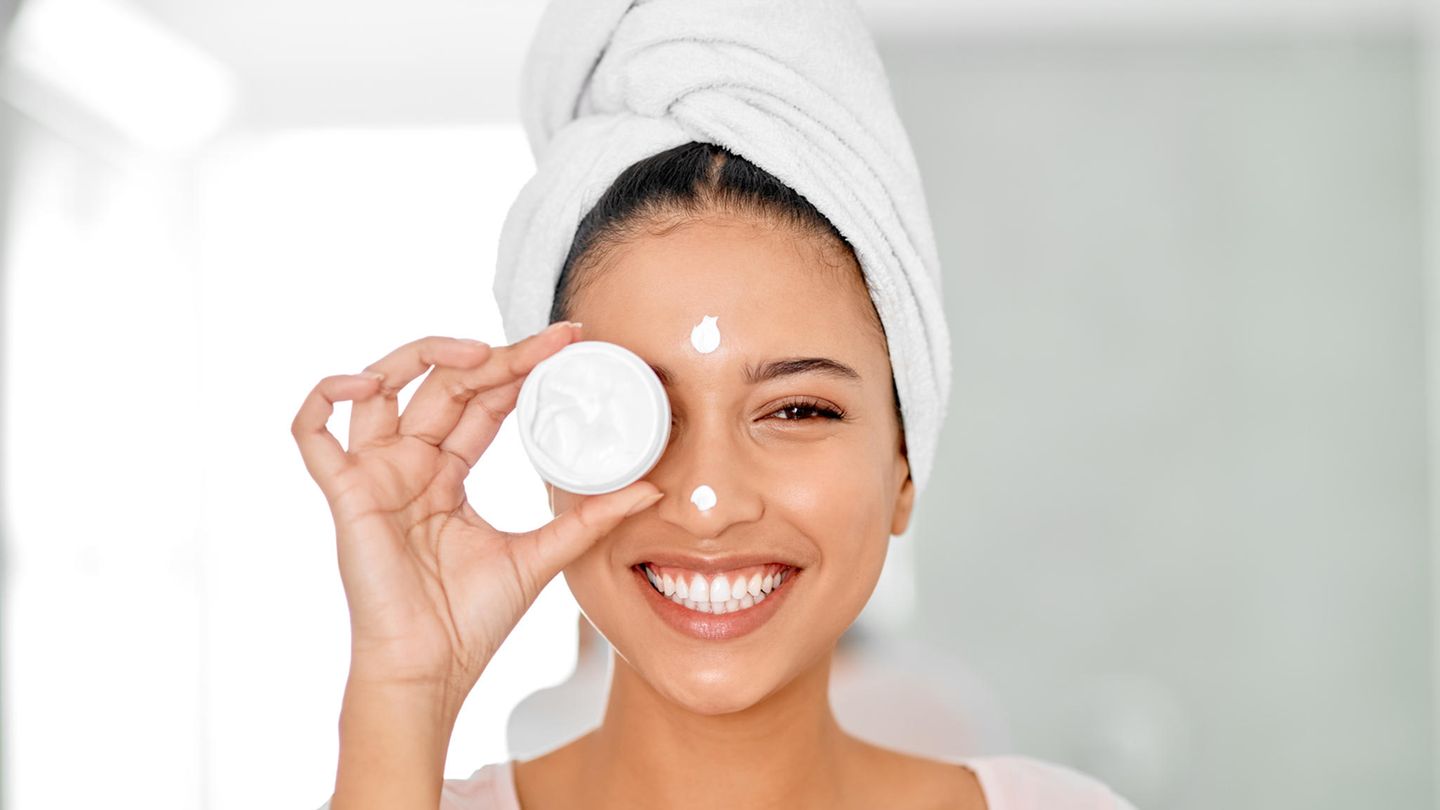Bacteria killer
Spring tunes: Why zinc ointment against pimples can help
Copy the current link
Add to the memorial list
Spring units are a problem for many, although there are numerous cosmetic products. However, what many do not know: zinc ointment is a much effective remedy for pimples.
Perhaps you already know zinc ointment from medicine because you also for minor injuries (including abrasions and skin irritation) is used because it promotes the self -healing of the skin. Your antibacterial,Antiseptic and astringent effect can also help combat pimples. The zinc oxide contained in the ointment can bind and absorb water – i.e. it removes moisture to the skin and thus takes bacteria the breeding ground that they normally need to multiply and promote blemishes. In plain text, this means: Zinc ointment dries out pimples because it has its effect on the skin surface and does not have to penetrate the cycle first. However, it is important that you only use the ointment in a targeted manner. You can find out exactly how this works here.
How to apply zinc ointment correctly
Due to its composition made of zinc and oxygen, the zinc oxide contained in zinc ointments works like a disinfectant: it takes up the wound secretion, combats the bacteria and ensures that no pus can form – and the pimple thus dries out. The inflamed sebum glands, which lead significantly to the contamination of the skin, are literally sucked out. At the same time, the zinc forms a protective film on the skin so that it can regenerate faster.The So do not move in like ordinary anti-pimple creams, so it should not be applied extensively. And not in the morning, but rather before going to bed so that it can work overnight.
Proceed as follows:
- First clean your face thoroughly and remove all make-up residues.
- Take a cotton swab and apply the zinc ointment to be more hygienic.
- Wash the zinc ointment with lukewarm water the next morning.
Tip: Zinc ointment not only helps against pimples on the face, but can also be used against blemishes on the back, in the cleavage or on the buttocks.
Zinc ointment against pimples: three products in comparison
1. Dr. Ehrlich’s acne ointment
Most zinc ointments are white, but there are also skin -colored variants. The consistency is just as soft and firm as with an ordinary wound cream. In addition to zinc oxide, some ointments also contain other ingredients that have an antiseptic effect – such as tea tree oil. Here you can go to products such as Dr. Ehrlich’s acne ointment against pimples, blackheads and impure skin. The ointment made in the natural manufaktur in the Allgäu according to GMP Standard (“Good Manufacturing Practice”) is filled into a light -opaque glass in order to obtain the natural active ingredients. you can order the product.
2. Zinc balm by Greendoor
If you prefer natural cosmetics, this zinc ointment from Greendoor is also a good choice. It contains no silicones, parabens or other synthetic ingredients. Instead, the brand relies on natural antibacterial ingredients, such as organic neem oil, organic sesame oil, organic coconut oil, hops and sage. The various oils primarily serve that the skin – despite zinc oxide – does not dry out. It is important for you to know that the zinc balm should spread a “healthy and herbal” smell due to the neem oil (according to the manufacturer) that does not like everyone.
you can order the product online.
In this ointment, too, zinc and tea tree oil enter into a sensible symbiosis. In contrast to the other two products mentioned, the zinc ointment is tinted (to cover impurities or pimples) and should not only help against pimples, but also generally for the care of irritated skin. Due to the slightly cooling effect that the manufacturer promises, itchy skin areas are to be calmed down – this is what ingredients such as sesame oil, healing earth, zinc oxide, beeswax, tea tree oil, peppermint oil and manuka oil. you can order the product online.
Tip: have special greasy skinyou can counteract excessive sebum production with zinc ointment – because it pulls the sebum out of the pores and dries out the skin. Conversely, you should only use the ointment very economically if you tend to dry skin.
Zinc tablets promote the zinc household
People who suffer from acne often also have a zinc deficiency. Usually we take up enough zinc through our food, so the defect can usually also be compensated for via the menu. However, if this does not succeed, you can fall back on zinc tablets. However, be sure to adhere to the correct dosage, as an increased zinc absorption can lead to digestive problems or nausea. Ideally, speak to a dermatologist before taking zinc tablets regularly. The Get here:
That is why zinc ointment prevents pimples
As already mentioned at the beginning, zinc ointment promotes wound healing. This applies not only to skin abrasions or skin irritation, but also to the development of scar tissue, the so -called pimples. Because zinc has the property of softening solid scar tissue. As a result, the skin can better adapt to the surrounding flatter tissue, so that pimples do not arise or fade over time.
These foods contain a lot of zinc
Zink supports numerous metabolic processes in our body, such as the cell division or the metabolism of protein. If there is a zinc deficiency, the cell metabolism is also disturbed – which in turn can lead to blemishes such as pimples and blackheads, in the worst case even acne. For a healthy metabolism, it is inevitable to absorb enough zinc. And the easiest way to do this is through our diet. For example, the following foods contain a lot of zinc: grain and grain products, legumes, milk and dairy products, meat, fish, eggs and nuts. So that you get a better idea of the order of magnitude, you will find a nutrient table below:
| Groceries | Zinc per 100 g |
| Oysters: | 84.6 mg |
| Wheat bran: | 13.3 mg |
| Pumpkin seeds: | 7.0 mg |
| Beef: | 6.1 mg |
| Linseed: | 5.5 mg |
| Walnuts: | 3.0 mg |
| Gouda: | 4.0 mg |
| Chickpeas: | 2.6 mg |
| Shrimp: | 2.2 mg |
| Eggs: | 1.4 mg |
| Rice: | 0.6 mg |
| Bananas: | 0.2 mg |
*This article contains so-called affiliate links to products in online shops. If a user clicks on it and buys something, the publisher receives a commission from the dealer, not from the manufacturer. Of course, where and when you buy a product is up to you.
Source: Stern
I’m Caroline, a journalist and author for 24 Hours Worlds. I specialize in health-related news and stories, bringing real-world impact to readers across the globe. With my experience in journalism and writing in both print and online formats, I strive to provide reliable information that resonates with audiences from all walks of life.




